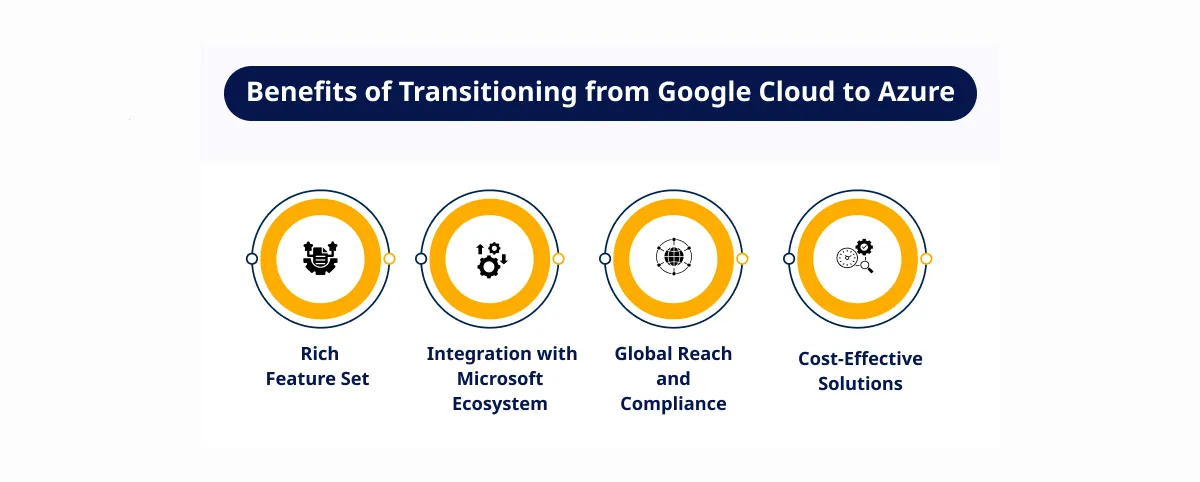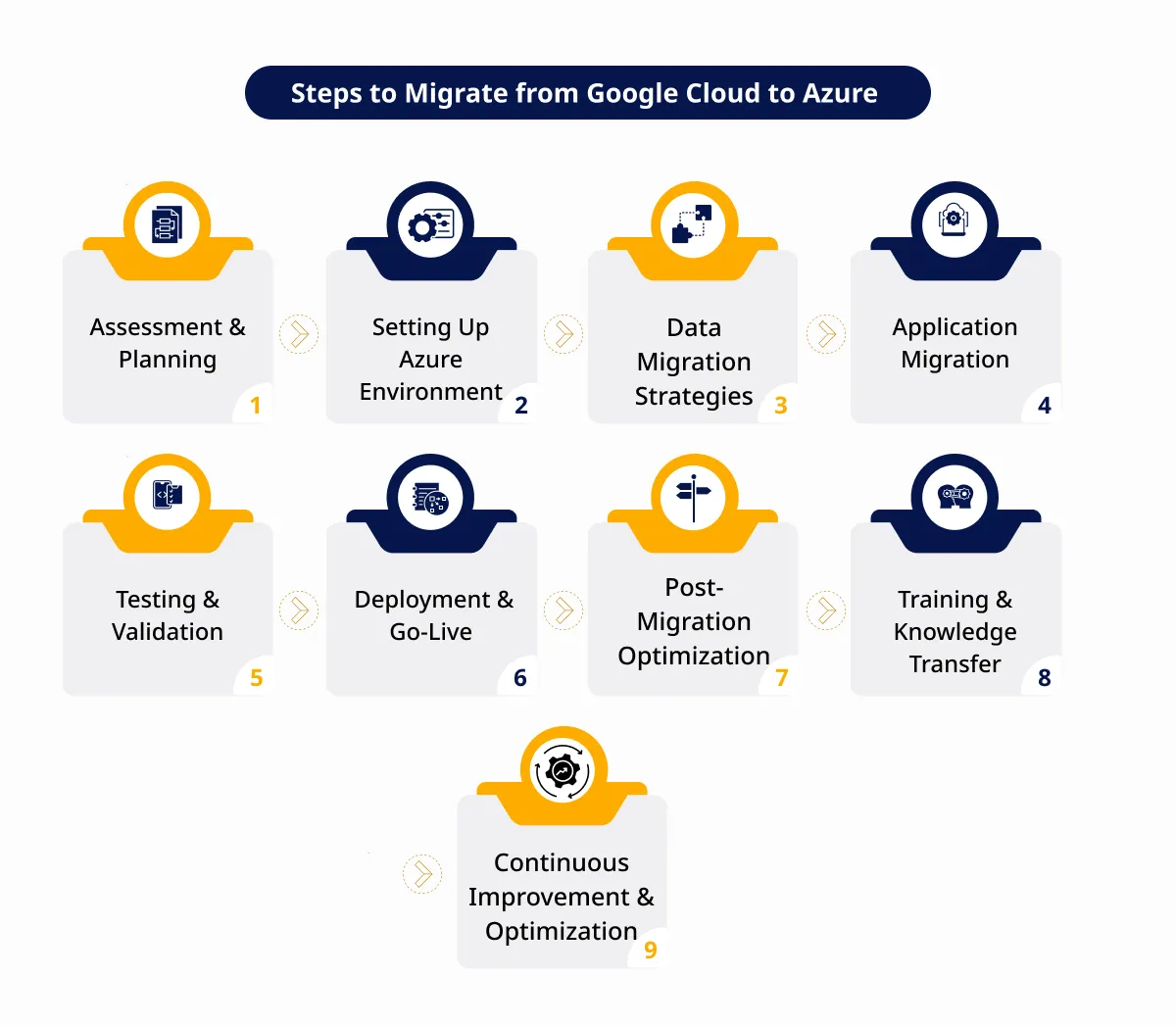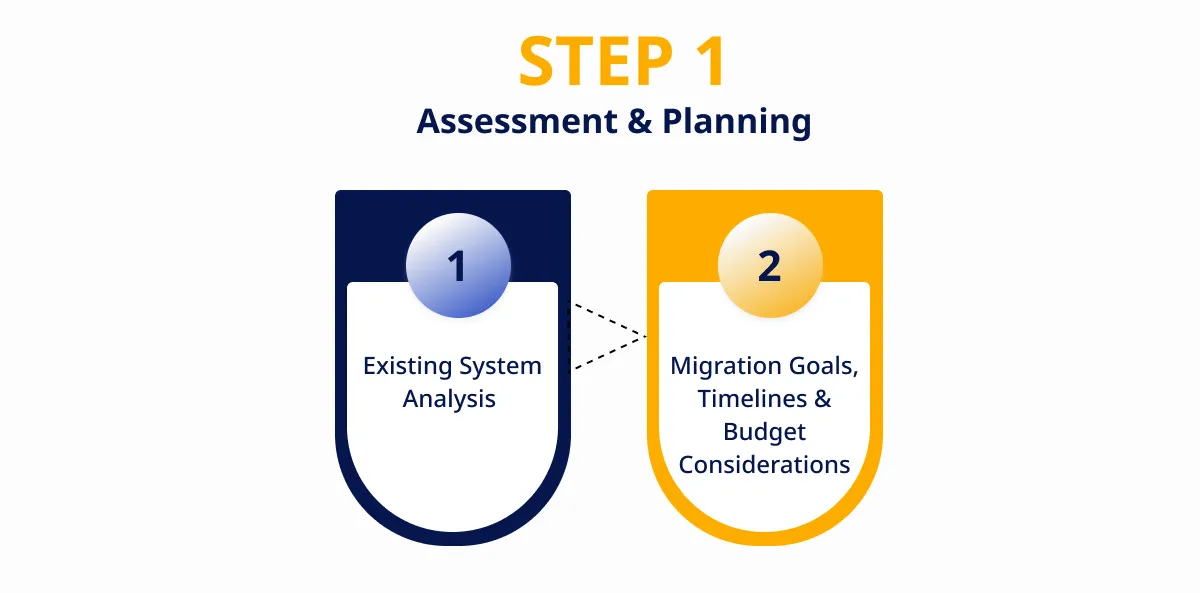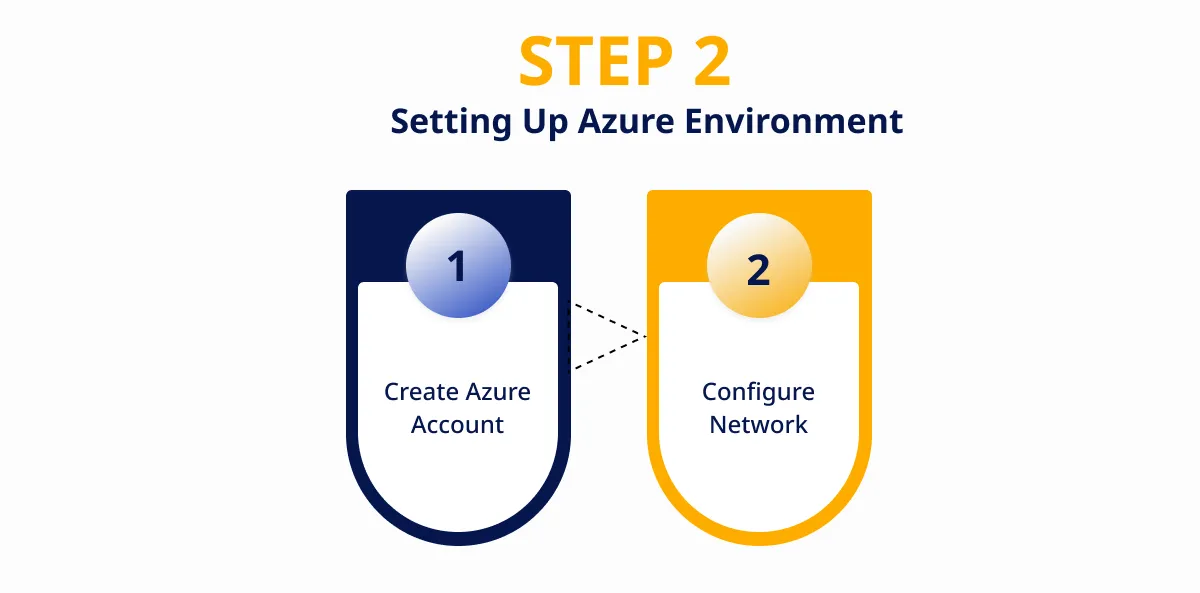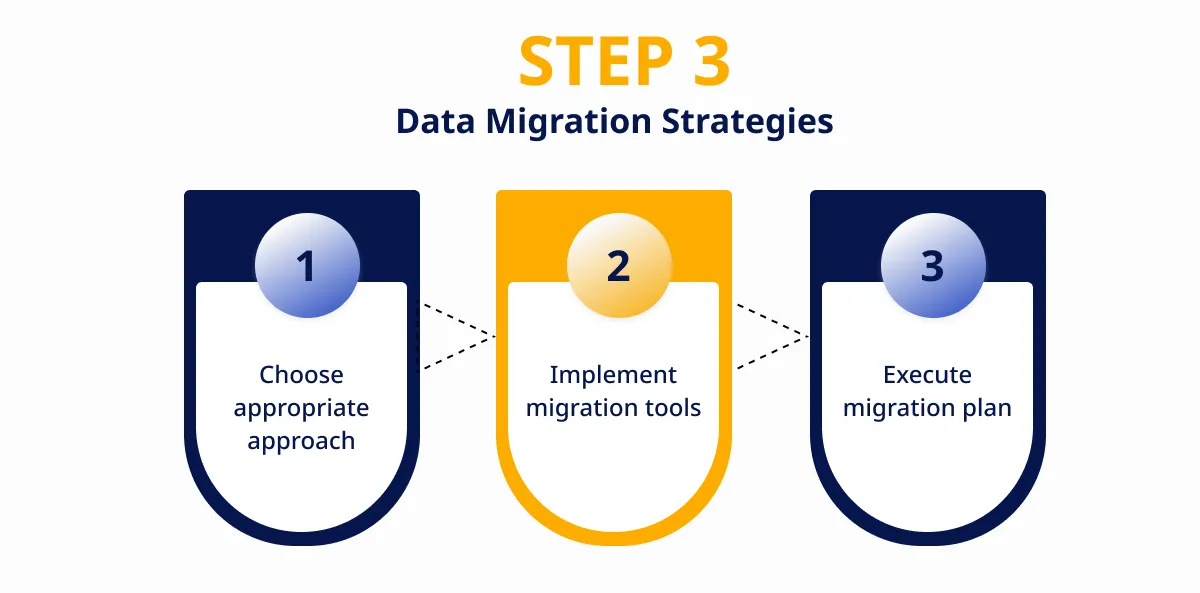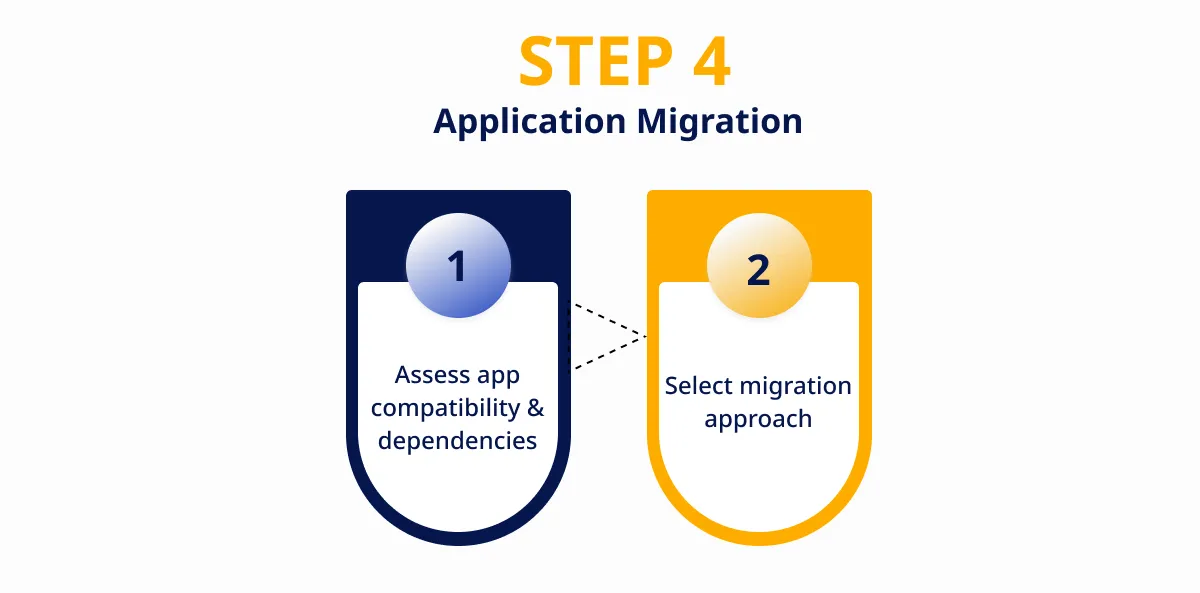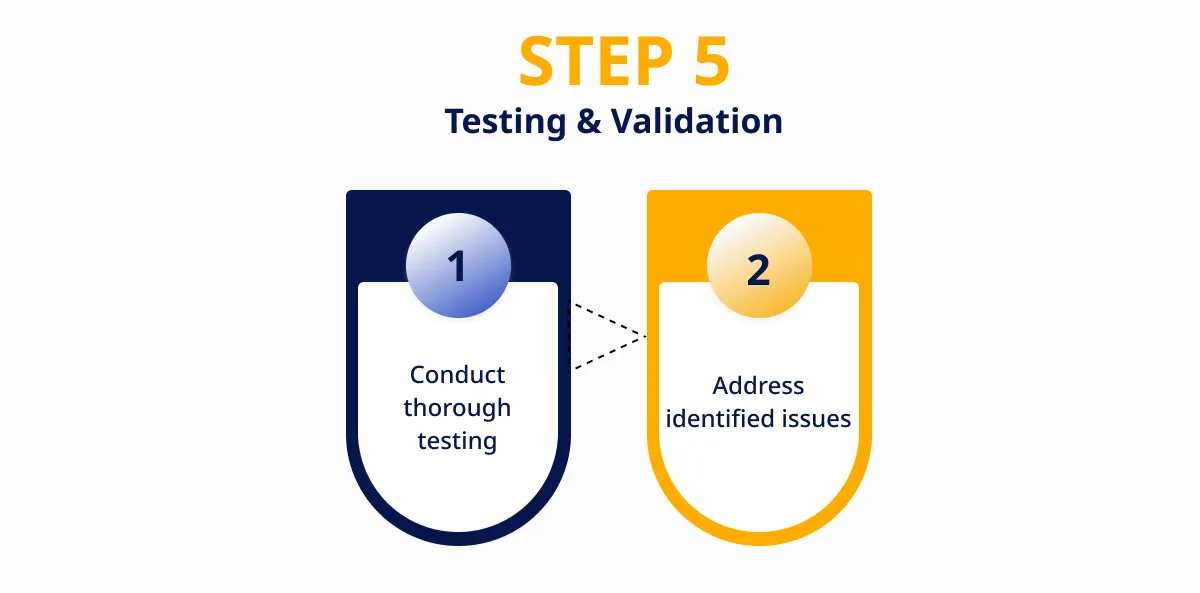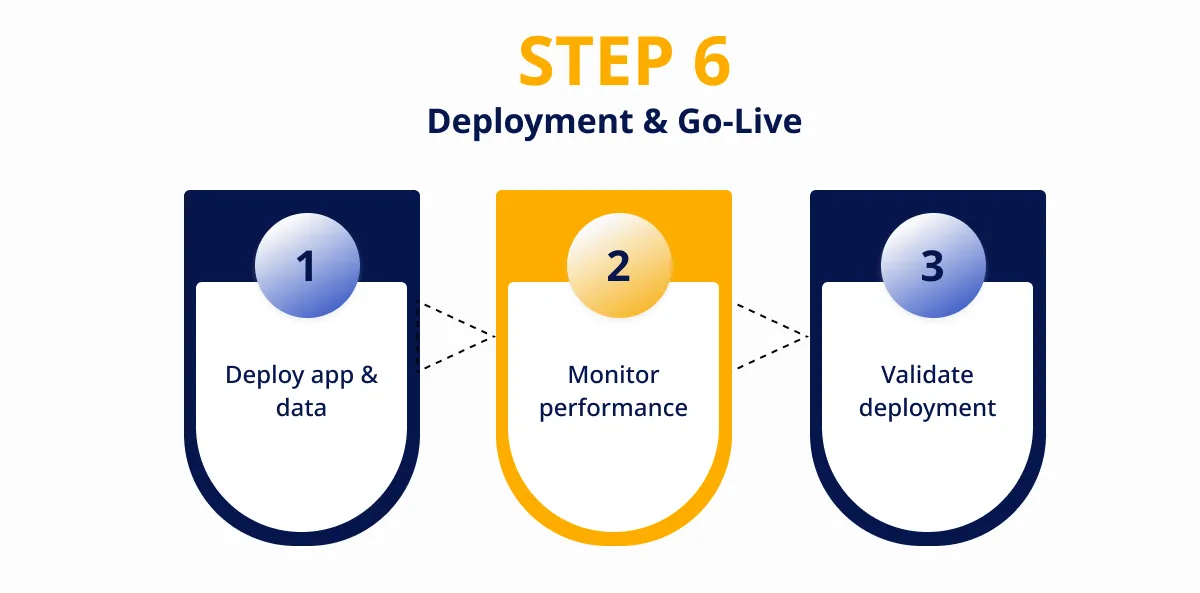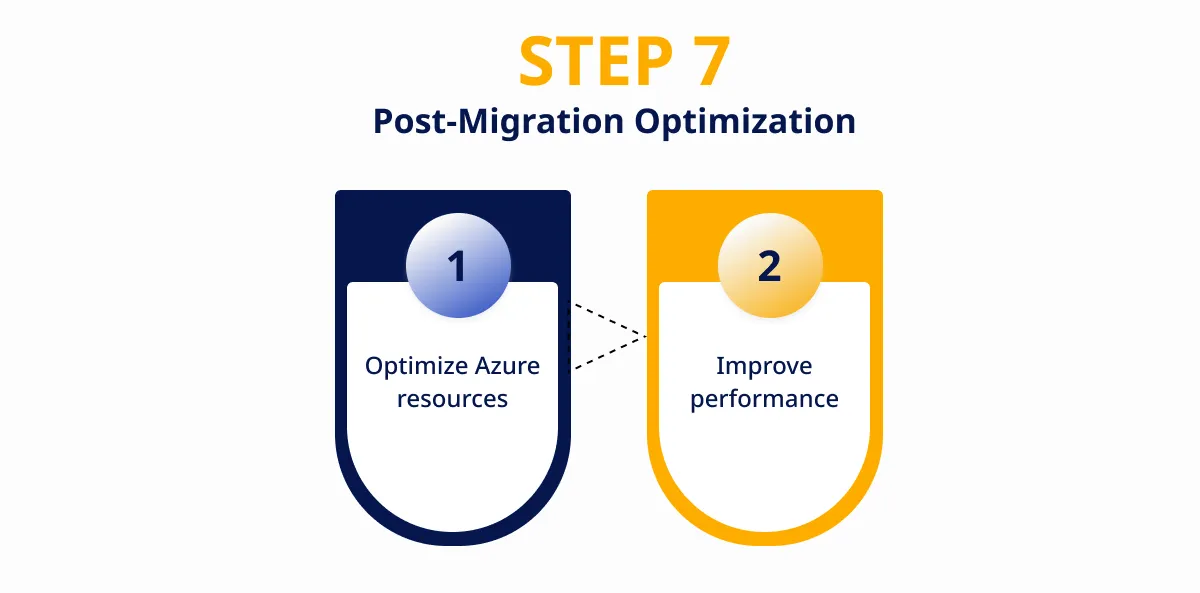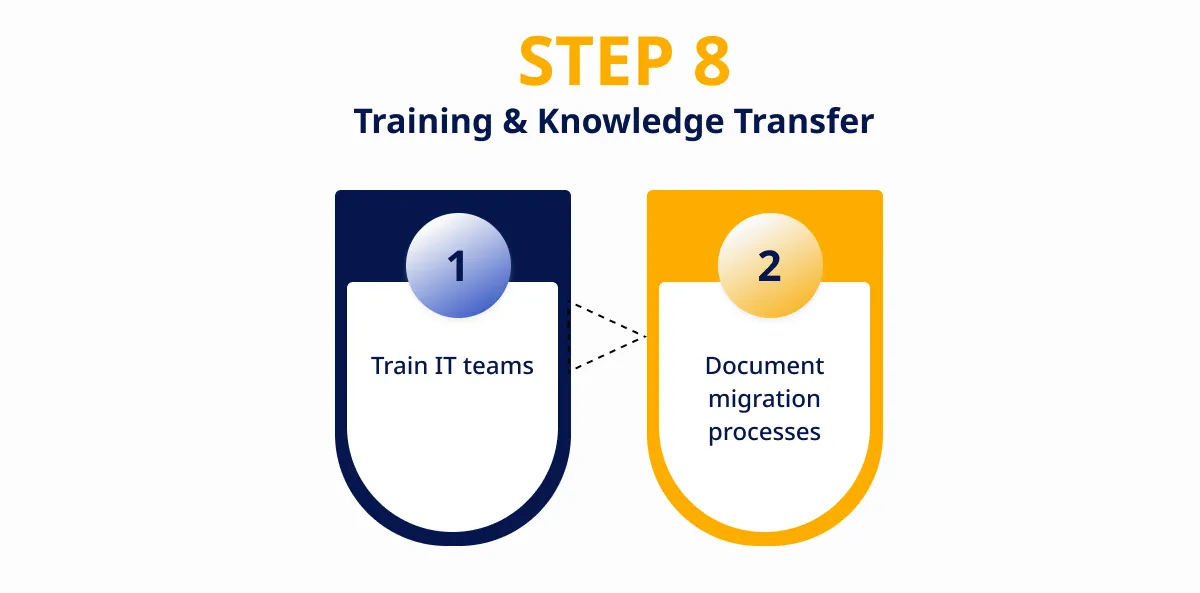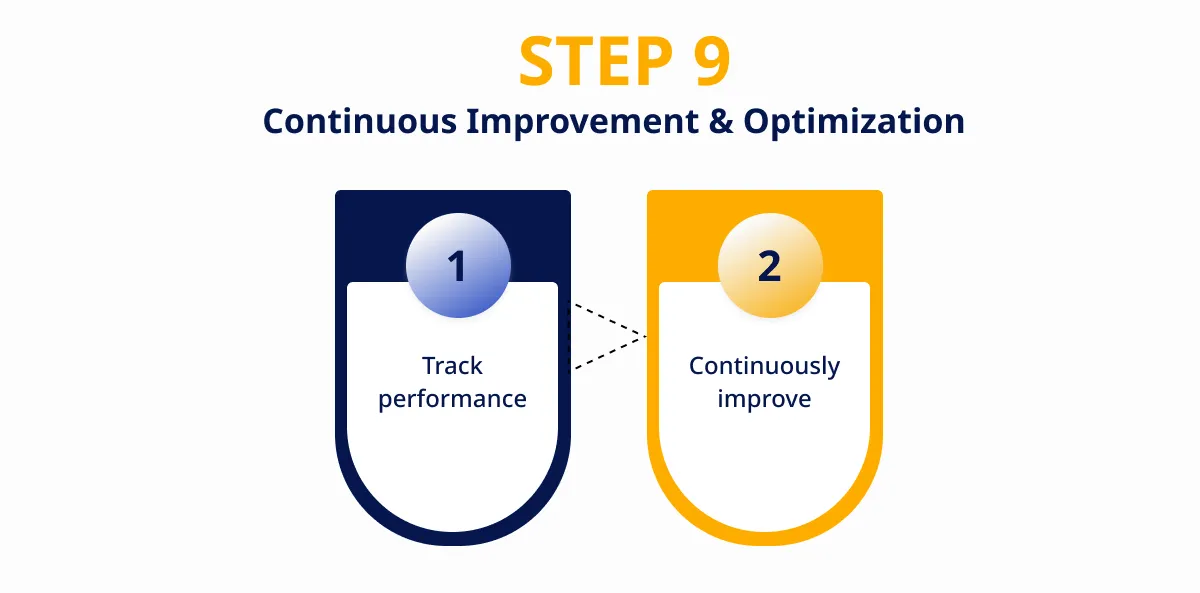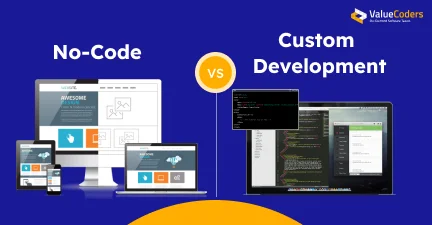Quick Summary
Discover how to migrate seamlessly from Google Cloud to Azure with our step-by-step guide. We’ve got you covered, from assessing your needs to optimizing your new Azure environment. Our easy-to-follow instructions will help you navigate the entire migration process, ensuring minimal disruption and maximum efficiency. By following our tips, you’ll save time and money and unlock the full potential of Azure for your business. Key takeaways include:
- Understanding the importance of thorough assessment before migration.
- Learn how to plan and execute your migration strategy effectively.
- Discover optimization techniques to make the most of your Azure environment.
- Gain insights into maximizing cost savings and performance benefits with Azure.
Transitioning between cloud providers can be daunting, but as tech visionary Satya Nadella once said,
‘Our industry does not respect tradition — it only respects innovation.’
Embracing innovation means exploring new possibilities, like migrating from Google Cloud to Azure.
As businesses evolve, so do their needs. Many encounter pain points like compatibility issues or cost concerns.
Are you facing similar challenges?
Wondering how migrating from Google Cloud to Azure could benefit your business?
Our comprehensive step-by-step guide is here to illuminate the path. Learn the seamless process, discover cost-saving strategies, and unleash the potential of Azure’s robust ecosystem.
Introduction to Cloud Migration
Are you considering migrating from Google Cloud to Azure?
Before getting into the nitty-gritty of the migration process, let’s take a step back and understand the importance of cloud migration and the benefits of transitioning from one cloud platform to another.
Cloud migration involves moving data, applications, and other business elements from an on-premises infrastructure or one cloud platform to another.
It’s not just about relocating assets; it’s about optimizing resources, enhancing scalability, and unlocking new opportunities for innovation.
Importance of Cloud Migration
There are many reasons businesses consider cloud migration; some choose it to get scalability and flexibility, while others opt for it for cost optimization and safeguarding their data. Let’s understand in detail why cloud migration is crucial:
- Scalability and Flexibility: Cloud migration enables businesses to scale their resources dynamically based on demand, ensuring optimal performance and cost-efficiency.
- Enhanced Security: Leveraging cloud platforms like Azure offers advanced security features and compliance certifications, safeguarding sensitive data and ensuring regulatory compliance.
- Cost Optimization: Cloud migration can lead to significant cost savings by eliminating the need to maintain on-premises infrastructure and enabling pay-as-you-go pricing models.
- Improved Collaboration: Cloud platforms facilitate seamless collaboration and data sharing among teams, enhancing productivity and innovation.
This evident significance of Cloud migration has led to a rise in demand for Top Cloud Services Companies as more businesses choose Cloud migration.
Let ValueCoders streamline your transition with expert guidance and support.
Why is Transitioning from Google Cloud to Azure Beneficial?
Transitioning from Google Cloud to Azure offers businesses enhanced scalability, flexibility, and integration capabilities. This shift allows for optimized performance, expanded service offerings, and seamless integration with existing Microsoft technologies.
With our Cloud Strategy & Consulting Service, we provide expert guidance to facilitate a smooth transition, helping businesses leverage the full potential of Azure for their growth and success.
Let’s talk about the key benefits in more detail:
- Rich Feature Set: Azure offers a comprehensive suite of features and services, including AI and machine learning, IoT, and analytics, empowering businesses to innovate and differentiate.
- Integration with Microsoft Ecosystem: Transitioning to Azure enables seamless integration with other Microsoft services and products, such as Office 365 and Dynamics 365, enhancing productivity and workflow efficiency.
- Global Reach and Compliance: Azure boasts a vast global network of data centers. It ensures low-latency connectivity and compliance with local data sovereignty regulations crucial for businesses operating in multiple regions.
- Cost-Effective Solutions: Azure provides flexible pricing options and cost management tools. It allows businesses to optimize their cloud spending and maximize ROI.
Step-by-Step Guide to Migrate from Google Cloud to Azure
Let’s discuss the step-by-step process of migrating your infrastructure and applications from Google Cloud to Azure…
Step 1: Assessment & Planning
Before migrating from Google Cloud to Azure, conducting a thorough assessment and meticulous planning is essential.
Let’s discuss the first step of this process:
Evaluating Existing Infrastructure & Applications
Assessing current infrastructure ensures a smooth migration process by identifying resources, dependencies, and compatibility issues.
It lays the foundation for a successful transition to Azure.
Inventory Analysis
Start by creating a comprehensive inventory of all resources currently hosted on Google Cloud, including
- Virtual machines
- Databases
- Storage
- Networking components
Assessment Tools
Utilize assessment tools provided by both Google Cloud and Azure to gather data on resource usage, performance metrics, and dependencies.
Application Compatibility
Evaluate the compatibility of applications and workloads with Azure services, considering any dependencies or limitations.
Also Read: Google Cloud VS Azure: Which Platform Is Best To Pick In 2024?
Determining Migration Goals, Timelines & Budget Considerations
Establishing clear migration goals, timelines, and budget considerations provides direction, ensures realistic planning, and helps manage resources effectively throughout the migration journey to Azure.
- Migration Goals: Define clear migration goals, such as reducing costs, improving performance, enhancing scalability, or leveraging specific Azure features.
- Timelines: Establish realistic timelines for each phase of the migration process, considering factors like data transfer speeds, application complexity, and downtime allowances.
- Budget Considerations: Conduct a cost-benefit analysis to estimate the expenses of migrating from Google Cloud to Azure, including one-time migration and ongoing operational costs.
Discover how ValueCoders can guide you through the initial evaluation process!
Step 2: Setting Up Azure Environment
Once you’ve completed the assessment and planning phase, it’s time to set up your Azure environment to prepare for migration.
Let’s explore the key steps involved:
Creating an Azure Account & Setting Up Necessary Infrastructure
To begin, create an Azure account if you haven’t already done so.
Follow these steps:
- Visit the Azure portal and sign up for an account.
- Choose the appropriate subscription plan per your organization’s needs and requirements.
- Set up the necessary infrastructure to mirror your existing Google Cloud environment, including virtual networks, storage accounts, and compute resources.
Configuring Network Settings & Security Measures
Network configuration and security is paramount when setting up your Azure environment.
Here’s what you need to consider:
Network Configuration: Configure virtual networks, subnets, and IP addressing schemes to ensure seamless connectivity between resources.
Security Measures: Implement robust security measures to protect your data and applications, including access controls, firewalls, and encryption protocols.
When migrating from Google Cloud to Azure, ensuring seamless connectivity and data protection is essential by configuring robust network settings and security measures.
Step 3: Data Migration Strategies
Now that you’ve assessed your infrastructure and set your migration goals, it’s time to dive into the crucial data migration step.
Here’s how you can seamlessly transfer your data from Google Cloud to Azure:
Choosing the Appropriate Data Migration Approach
Selecting the right Data migration approach is crucial for successful cloud migration, here’s how you can ensure that:
- Lift-and-Shift: Move your applications and data from Google Cloud to Azure without significant changes. Quick and straightforward, but may not fully optimize Azure’s capabilities.
- Re-platforming: Make minor adjustments to applications or infrastructure to better align with Azure services. Balances speed and optimization effectively.
- Re-architecting: Redesign applications to leverage Azure’s native services fully. Offers the highest optimization but requires more time and resources.
Implementing Data Migration Tools & Techniques
Now let’s look at the tools and techniques for implementing Data Migration successfully:
Assess Your Data
Start by assessing your data’s volume, complexity, and dependencies. This will help you choose the most suitable migration tools and techniques.
Choose Migration Tools
Select the appropriate tools and techniques for data transfer based on your chosen migration approach. Azure offers a range of migration tools, such as:
- Azure Data Factory
- Azure Database Migration Service,
- Azure Site Recovery
Execute Migration Plan
Once you’ve chosen your tools, execute your migration plan meticulously. Ensure thorough testing and validation to minimize disruptions during the migration process.
Let ValueCoders execute your migration plan flawlessly, minimizing downtime and disruptions.
Step 4: Application Migration
In the Google Cloud to Azure migration process, application migration is a critical step that requires careful planning and execution.
The key aspects of this step involve:
Assessing Application Compatibility & Dependencies
Before initiating the migration process, thoroughly assessing your applications for compatibility and dependencies is essential.
Here’s how to do it:
- Evaluate Application Stack: Assess your applications’ technology stack, programming languages, and frameworks.
- Identify Dependencies: Determine dependencies on third-party services, databases, and APIs.
- Compatibility Analysis: Analyze compatibility with Azure services and identify potential challenges.
Selecting Migration Strategies
Once you’ve assessed compatibility and dependencies, it’s time to choose the most suitable migration strategy.
Consider the following options:
- Rehost (Lift and Shift): Migrate applications as-is to Azure without making any significant changes.
- Refactor (Replatform): Optimize applications for Azure’s platform services while retaining core functionality.
- Rearchitect (Redesign): Completely redesign applications to leverage Azure’s native capabilities and maximize performance.
Facing issues while migrating your applications from Google Cloud to Azure? Hire Azure Developers to ensure a smooth and successful migration process.
Step 5: Testing & Validation
After the meticulous Google Cloud to Azure migrating process, ensuring everything works seamlessly is crucial.
Testing and validation play a crucial role in this phase, where we conduct thorough assessments to confirm the functionality and performance of migrated data and applications.
Conduct Thorough Testing
Thorough testing ensures data integrity, application functionality, performance, and security in the Azure environment.
It guarantees a smooth transition and optimal performance post-migration.
Here’s how to do it:
- Data Integrity Testing: Verify the integrity and accuracy of migrated data to ensure no loss or corruption during migration.
- Functionality Testing: Test the functionality of applications and services in the Azure environment to ensure they perform as expected.
- Performance Testing: Assess the performance of applications under different workloads to identify any performance issues or bottlenecks.
- Security Testing: Conduct security testing to ensure data and applications are adequately protected in the Azure environment.
Address Identified Issues
Addressing identified issues promptly ensures seamless operations in the Azure environment.
It minimizes disruptions, optimizes performance, and enhances overall efficiency, fostering a successful migration outcome.
- Resolution of Errors: Address errors or discrepancies identified during testing promptly to prevent impact on business operations.
- Optimization: Optimize configurations and settings to enhance performance and efficiency in the Azure environment.
- Documentation: Document any issues encountered during testing and the steps taken to resolve them for future reference.
Step 6: Deployment & Go-Live
You’re almost there! It’s time to take the final leap and deploy your migrated applications and data to the Azure environment.
Let’s dive into the crucial steps for a successful deployment and seamless go-live.
Deploying Migrated Applications & Data
Ensuring all applications and data are properly deployed sets the foundation for a successful transition to Azure, minimizing disruptions and maximizing productivity.
- Preparation is Key: Ensure all necessary applications and data are migrated and ready for deployment.
- Smooth Transition: Use migration tools and scripts to automate deployment processes, minimizing manual errors.
- Verify Compatibility: Double-check application dependencies and configurations to ensure compatibility with the Azure environment.
- Gradual Deployment: Consider deploying applications in phases to manage risk and ensure a smooth transition.
Monitoring Performance & Final Validation
Continuous monitoring and validation ensure that migrated applications perform optimally and meet user expectations while thorough security and data integrity checks safeguard against potential risks.
- Performance Check: Monitor performance metrics closely to identify any bottlenecks or issues.
- User Acceptance Testing: Conduct final validation and user acceptance testing to ensure functionality meets expectations.
- Security Review: Verify security configurations and access controls to protect against vulnerabilities.
- Data Integrity Check: Validate data integrity to ensure no loss or corruption during migration.
Gain peace of mind with ValueCoders' ongoing monitoring and management support for your Azure deployment.
Step 7: Post-Migration Optimization
Congratulations on completing your Google Cloud to Azure Migrating journey!
It’s time to ensure your Azure environment is optimized for cost efficiency and performance.
Optimizing Azure Resources
Efficient resource allocation is crucial for cost savings and performance.
Right-sizing, utilizing reserved instances, and autoscaling ensure optimal resource utilization in Azure environments.
- Right-Sizing Resources: Assess resource utilization and adjust to workload demands, avoiding over-provisioning.
- Utilizing Reserved Instances: Take advantage of Azure’s reserved instance pricing to lower costs for predictable workloads.
- Implementing Autoscaling: Enable autoscaling to dynamically adjust resources based on workload fluctuations, optimizing performance and cost.
Did you know? You can save up to 40% on cloud infrastructure costs by right-sizing your Azure resources.
Implementing Best Practices
Following best practices for monitoring, cost management, and security post-migration ensures continued efficiency, cost-effectiveness, and compliance in your Azure environment.
It’s essential for long-term success and stability.
- Monitoring and Alerting: Set up comprehensive monitoring and alerting to proactively identify and address performance issues.
- Regular Review of Cost Management: Conduct regular reviews of Azure costs and usage to identify areas for optimization and cost savings.
- Security and Compliance: Implement security best practices and ensure compliance with industry regulations to protect your data and applications.
Also Read: Cloud Computing Trends To Watch Out For In 2024
Step 8: Training & Knowledge Transfer
Now, let’s ensure that your IT teams and end users have the knowledge they need to navigate this new environment smoothly.
Providing Training for IT Teams and End Users
Empowering your IT teams with Azure training ensures smooth navigation of the new environment, minimizing errors and maximizing efficiency during migration.
- Empower Your Team: Equip your IT teams with the necessary skills and knowledge to navigate Azure’s environment effectively.
- Interactive Learning: Engage in hands-on training sessions to familiarize teams with Azure’s tools and features.
- Role-Specific Training: Tailor training programs to meet the needs of different roles, ensuring everyone is well-prepared for the migration.
Training your IT teams can significantly reduce downtime and errors during migration.
Documenting Migration Processes & Best Practices
Documenting insights and creating migration playbooks preserve valuable knowledge.
This fosters a culture of knowledge sharing, ensuring continuity and efficiency in future migrations and operations.
- Capture Insights: Document key learnings and insights from the Google Cloud to Azure migration process.
- Create Playbooks: Develop comprehensive migration playbooks outlining step-by-step procedures and best practices.
- Share Knowledge: Foster a culture of knowledge sharing by making documentation accessible to all stakeholders.
Step 9: Continuous Improvement & Optimization
Well, the journey doesn’t end here.
Continuous improvement and optimization are crucial to ensuring your cloud environment performs at its best.
Let’s explore the final step of the migration process:
Monitoring Performance & Workload Patterns
Continuous monitoring ensures optimal performance by identifying anomalies and bottlenecks, allowing proactive adjustments to maintain efficiency and reliability.
- Real-Time Insights: Utilize monitoring tools to track performance metrics and identify anomalies or bottlenecks.
- Proactive Approach: Stay ahead of potential issues by monitoring real-time workload patterns and resource utilization.
- Optimization Opportunities: Identify areas for improvement based on performance data and workload trends.
Implementing Continuous Improvement Strategies
Iterative refinement of the cloud environment enables adaptation to changing needs, fostering agility, efficiency, and ongoing optimization for sustained performance excellence.
- Iterative Approach: Embrace an iterative mindset by continuously assessing and refining your cloud environment.
- Feedback Loop: Solicit feedback from users and stakeholders to identify areas for enhancement and optimization.
- Agile Methodologies: Implement agile practices to adapt quickly to changing requirements and optimize resource allocation.
Incorporating Feedback for Future Migrations
Documenting lessons learned and gathering stakeholder feedback inform future migrations.
It drives continuous learning, innovation, and improvement for seamless transitions and enhanced outcomes.
- Lessons Learned: Document lessons from the migration process to inform future migrations and improvements.
- Feedback Mechanisms: Establish feedback mechanisms to gather insights from stakeholders and users about their experience with the migrated environment.
- Continuous Learning: Foster a continuous learning and improvement culture to drive innovation and efficiency in future migrations.
Stay ahead of the curve with ValueCoders' continuous improvement services.
Need Expertise for Your Cloud Migration?
Are you facing challenges in navigating the complexities of the Google Cloud to Azure migration process?
Don’t worry, you’re not alone.
Many businesses encounter hurdles due to a lack of expertise or resources.
However, there’s a solution to overcome these obstacles and ensure a smooth migration experience.
When Expertise is Lacking, Here’s What You Can Do:
- Partner with a Trusted Google Cloud Development Company
Consider collaborating with a reputable Google cloud development company like ValueCoders, known for its Google Cloud and Azure migrations expertise.
Our experienced team can provide the knowledge and support needed to navigate the migration process effectively.
- Engage Skilled Azure Developers
Leverage the expertise of Azure developers from ValueCoders who understand the intricacies of the Azure platform and can assist with migration tasks.
- Access Comprehensive Resources
Tap into our additional resources, such as training programs or Azure services in India, to fill knowledge gaps and enhance your team’s capabilities.
Final Words
Migrating from Google Cloud to Azure offers businesses numerous benefits, including enhanced scalability, flexibility, and cost-efficiency.
Organizations can ensure a seamless transition tailored to their needs and requirements by leveraging Google cloud consulting services.
With careful planning and execution, cloud migration can unlock new opportunities for innovation and growth.
ValueCoders, a leading IT consulting and solutions provider, stands ready to assist businesses at every step of the migration journey.
Trust in our expertise to streamline your transition and reap the full rewards of cloud migration benefits.
Stay ahead of the curve with ValueCoders’ continuous improvement cloud application development services, ensuring your Azure environment evolves with your business.


